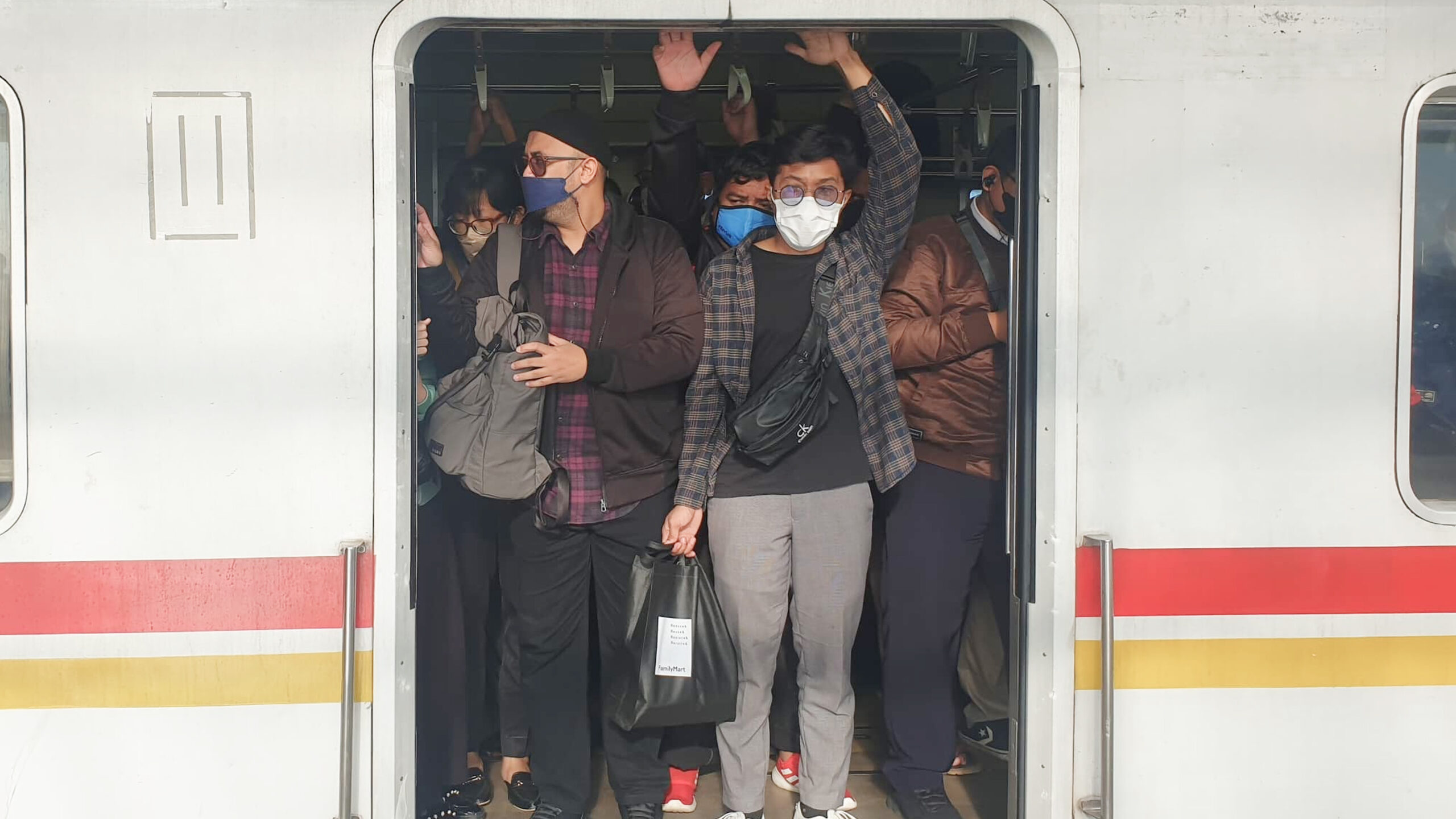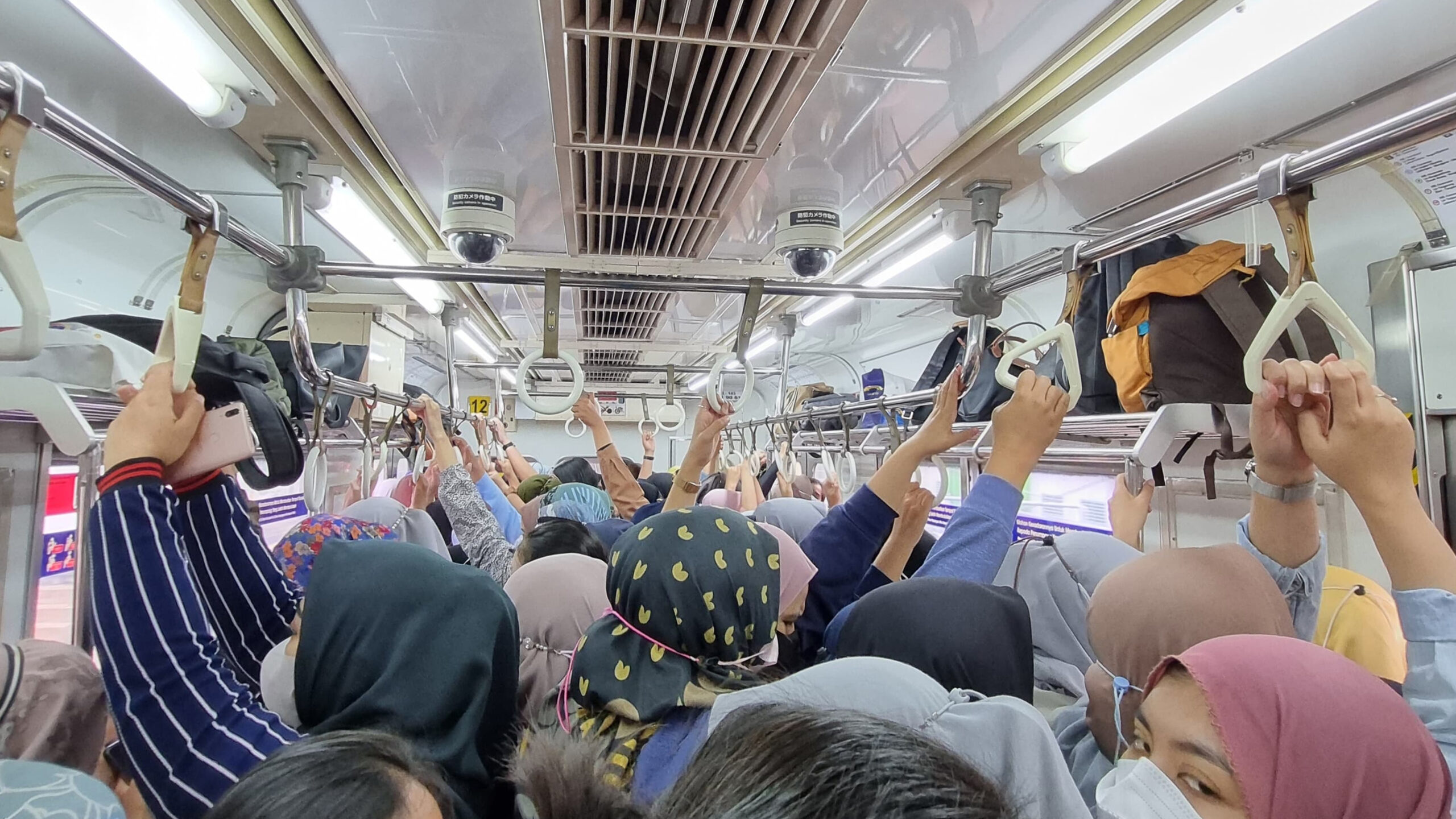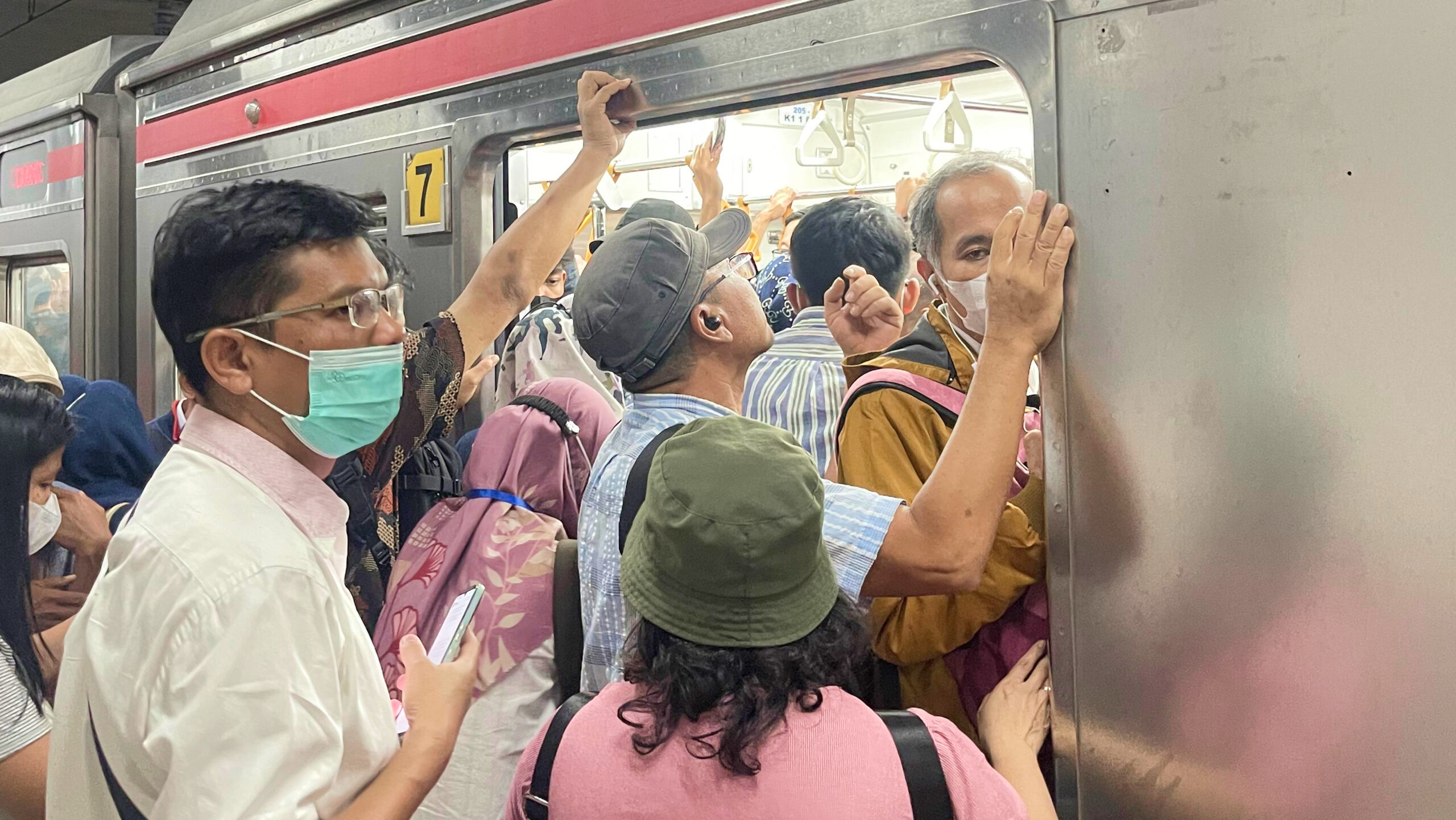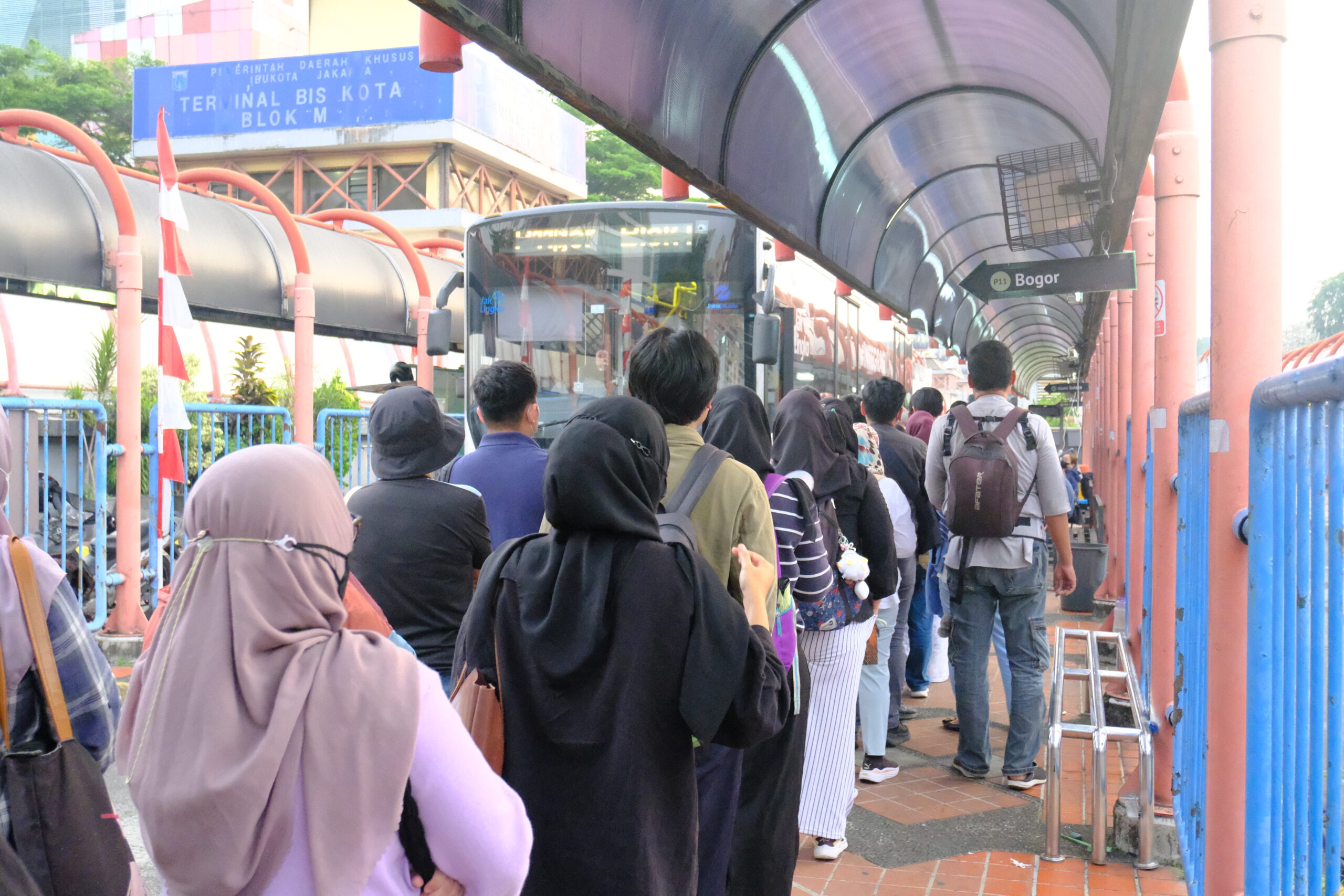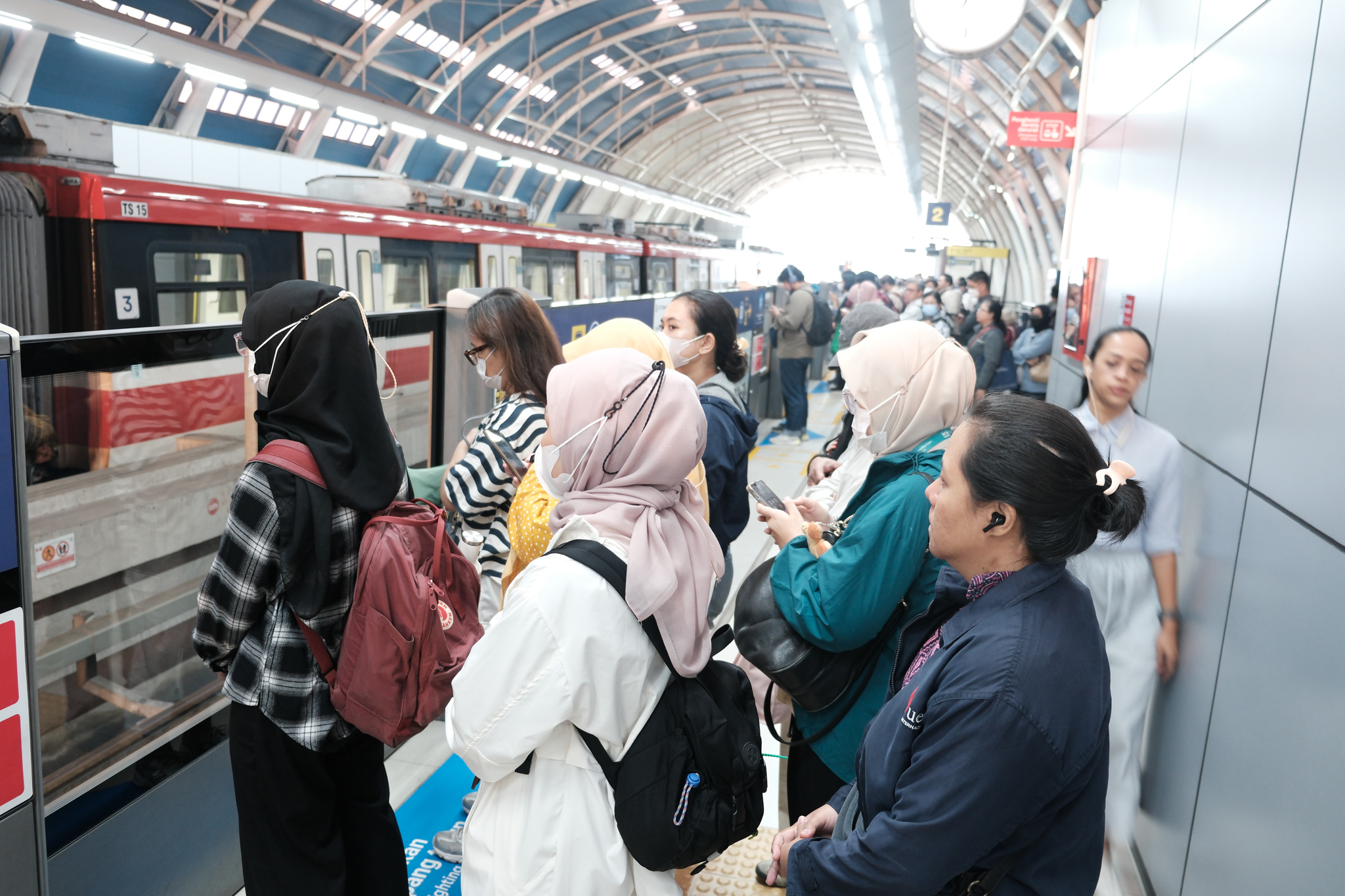September 03, 2025
Not Yet Independent in Mobility: Sustainable Transport Remains Out of Reach
By Mizandaru Wicaksono, Urban Mobility Manager ITDP Indonesia
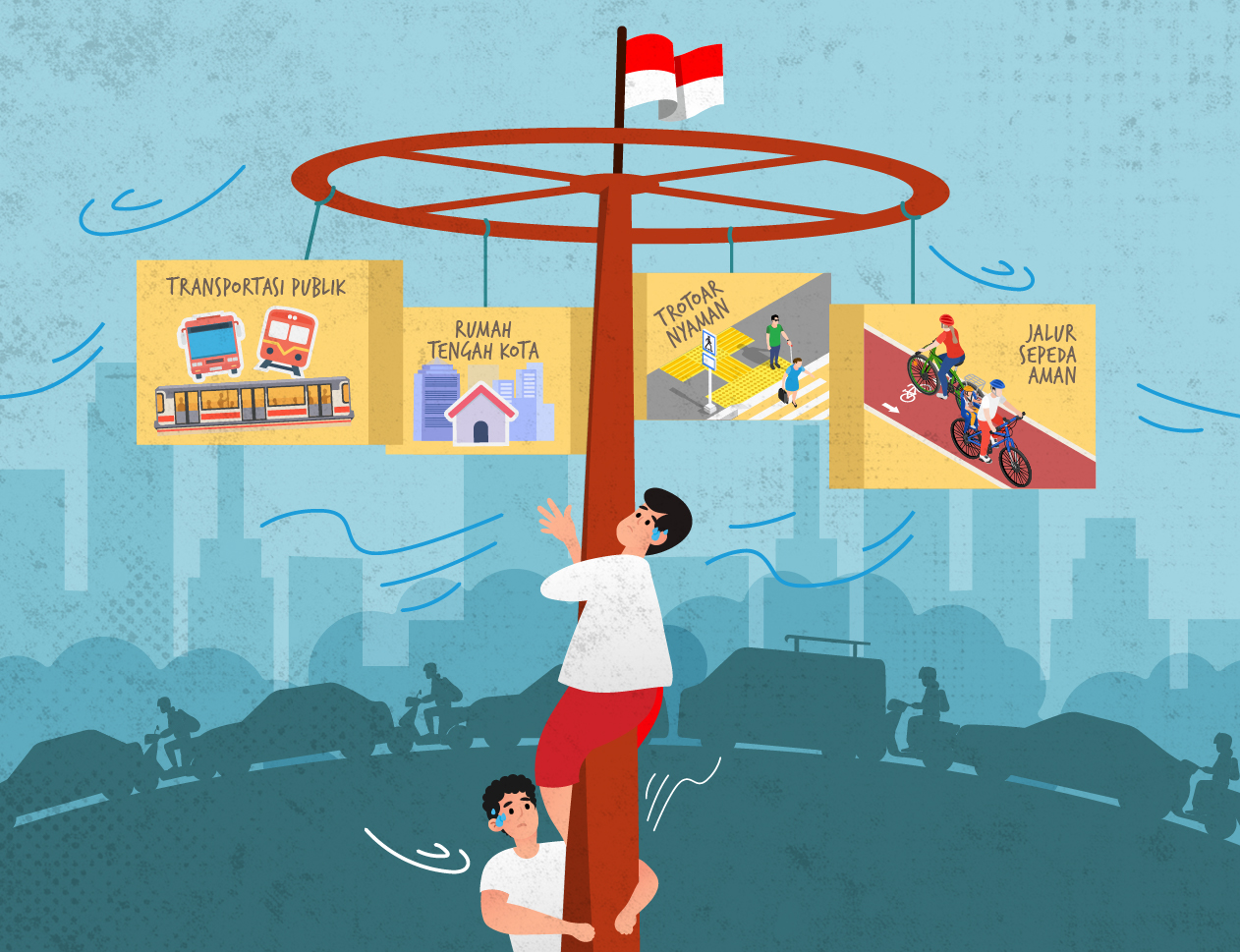
Indonesia has just celebrated its 80th Independence Day. At an age that is no longer young, Indonesia has grown into one of the countries with the largest economic scale in the world. In addition to being a permanent member of the G20, Indonesia ranks as the world’s 7th largest economy in terms of GDP per capita based on Purchasing Power Parity (PPP), surpassing France and the United Kingdom. Even so, Indonesia has yet to ensure its people are independent from the need to rely on private vehicles.
Private vehicle ownership is strikingly high across the country. In Jakarta, the country’s economic hub, private vehicle ownership reaches 1,077 vehicles for every 1,000 residents. That number towers over global cities like Singapore, with just 133 vehicles per 1,000 residents1, and New York, with 2352. High private vehicle ownership is not limited to major cities; in smaller cities like Surakarta, the figure still reaches 771 vehicles per 1,000 residents. These high ownership levels reflect Indonesians’ dependence on motorcycles and private cars for daily mobility.
The lack of reliable alternatives is a major factor. Out of 98 cities nationwide, only 25 currently operate mass public transport systems, and even then, coverage and quality of service are generally still far from ideal.
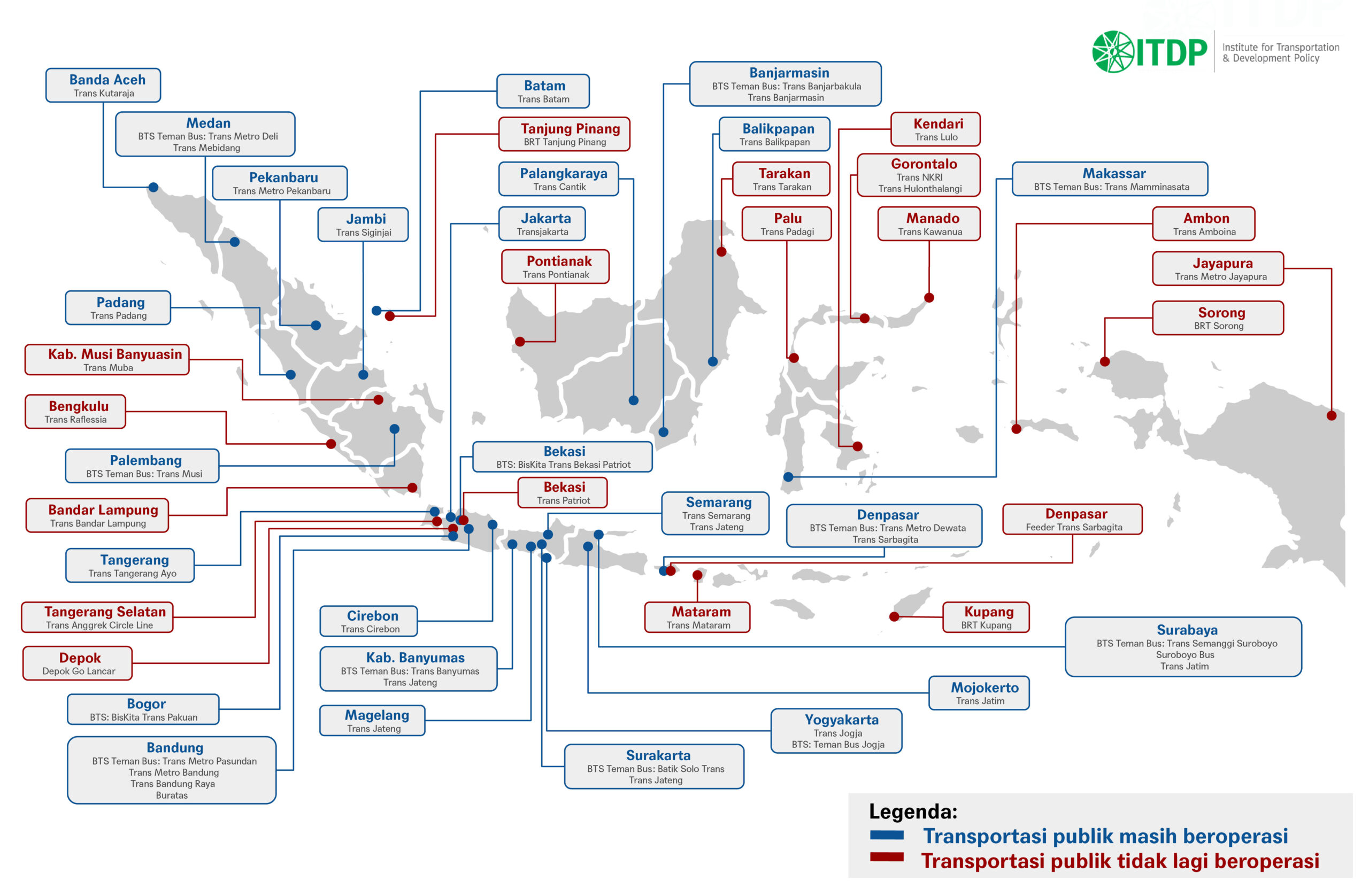
Take Pekanbaru: despite operating the Trans Metro system independently for 16 years, the city’s public transport share was still below 3% in 2021, mainly because the network covered just 16% of its total area.
Jakarta, meanwhile, has a far more developed public transport system. The city has TransJakarta buses, MRT, LRT, and commuter rail, with 85% of residents living within 500 meters of a station or stop3. However, only 11% of Jakarta’s population uses public transport for daily travel4. The reason, according to ITDP’s 2023 survey, is simple: people find the system too crowded and uncomfortable, especially at rush hour.
It isn’t just the scarcity of dependable public transport. Indonesians also rely on private vehicles because most cities lack safe and inclusive infrastructure for walking and cycling. Too often, pedestrians and cyclists are forced to share the road with motor vehicles, when in fact walking and cycling should serve as the main modes of travel for short trips (under 500 meters) and medium journeys (up to 5 kilometers). In addition to sidewalks and bike lanes, safe and inclusive crossings are vital parts of the network, yet they remain too often overlooked by policymakers.
So what can cities do to deliver better public transport and safe nonmotorized transport infrastructure?
Advances in technology have opened new opportunities for sustainable mobility. In public transport, exploring contract models beyond the traditional Buy-the-Service scheme could reduce budget needs by up to 24%. The adoption of electric buses is also expected to cut additional operating costs by around 5%. For nonmotorized transport, pelican crossings not only offer greater inclusivity but can also be more cost-effective than pedestrian bridges. Sidewalks and bike lanes, meanwhile, should be prioritized in areas that connect directly to public transport and other public facilities.
Independence should not only be about freedom from colonial rule, but also about the freedom to choose. Indonesia’s economic progress should be used to expand sustainable and inclusive mobility options for its people. Only when Indonesians can choose to rely on public transport, walk comfortably, cycle safely, or even live closer to their workplaces can the nation be said to have achieved independence in mobility—freedom from the need for private vehicles.

